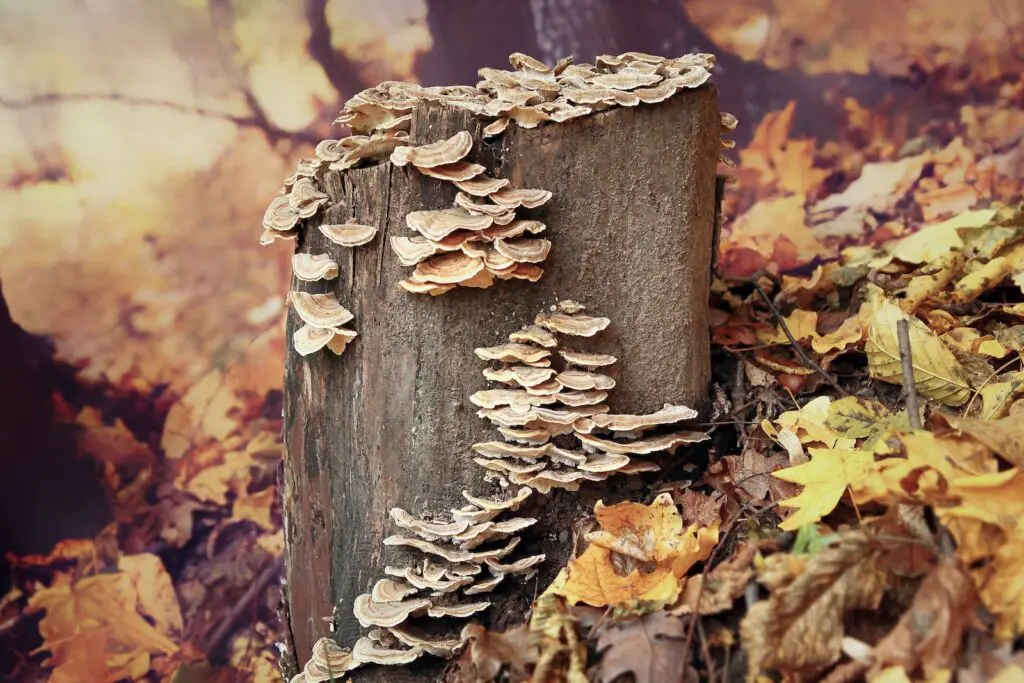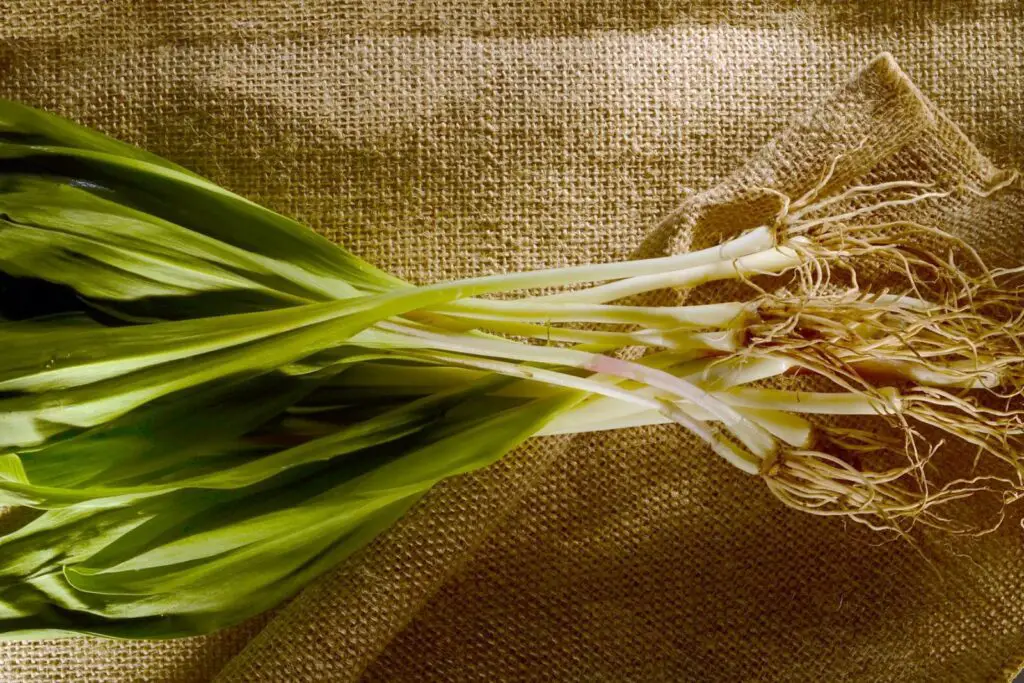
Matsutake mushrooms are a delicacy known for their distinct aroma and flavor. These mushrooms are highly prized in Asian cuisine and are often used in various dishes such as soups, stir-fries, and rice dishes. While matsutake mushrooms are typically available during specific seasons, freezing them can help preserve their quality and allow you to enjoy their unique taste all year round. By following a few simple steps, you can freeze matsutake mushrooms effectively, ensuring they retain their texture and flavor. This article provides a comprehensive guide on freezing matsutake mushrooms for future use.
Here’s a step-by-step guide on how to freeze matsutake mushrooms:
- Step 1: Select fresh matsutake mushrooms
- Step 2: Clean and trim the mushrooms
- Step 3: Slice or leave whole
- Step 4: Blanch the mushrooms
- Step 5: Drain and pat dry
- Step 6: Arrange the mushrooms for flash-freezing
- Step 7: Package and seal the mushrooms
- Step 8: Label and date the packages
- Step 9: Store in the freezer
Step 1: Select fresh matsutake mushrooms
When freezing matsutake mushrooms, it’s crucial to start with fresh mushrooms to ensure the best quality and flavor after freezing. Here’s why selecting fresh matsutake mushrooms is essential:
- Texture and flavor preservation: Fresh mushrooms have a firm texture and a distinct aroma that is characteristic of matsutake mushrooms. By choosing fresh mushrooms, you can preserve their unique texture and flavor during the freezing process.
- Nutrient retention: Fresh matsutake mushrooms are packed with essential nutrients, including vitamins, minerals, and dietary fiber. Freezing them while they are fresh helps retain these nutrients, allowing you to enjoy the health benefits of matsutake mushrooms even after they have been frozen.
- Minimize the risk of spoilage: Matsutake mushrooms are highly perishable and can spoil quickly if they are not fresh when frozen. By selecting fresh mushrooms, you reduce the risk of spoilage and ensure that the mushrooms will remain safe to consume even after freezing.
To choose fresh matsutake mushrooms, look for the following characteristics:
- Firmness: Fresh matsutake mushrooms should feel firm and not mushy or soft to the touch. Mushrooms that are overly soft may indicate decay or spoilage.
- Aroma: Matsutake mushrooms are known for their strong and pleasant aroma. The mushrooms should have a distinct spicy, woody, or earthy fragrance. Avoid mushrooms with a musty or unpleasant smell.
- Appearance: Inspect the mushrooms visually and avoid any with visible signs of damage, such as bruises, dark spots, or mold. Fresh matsutake mushrooms typically have a clean, off-white to brownish color and a smooth surface.
Step 2: Clean and trim the mushrooms
Before freezing matsutake mushrooms, it’s important to clean them properly to remove any dirt, debris, or impurities that may affect their quality or taste. Here’s why cleaning and trimming the mushrooms is necessary:
- Removal of dirt and debris: Matsutake mushrooms grow in soil, and it’s common for them to have dirt or other particles clinging to their surfaces. Cleaning the mushrooms helps eliminate any unwanted elements, ensuring that you freeze them in a clean and hygienic state.
- Improved texture: Cleaning the mushrooms helps maintain their texture after freezing. Removing dirt and debris ensures that you don’t end up with gritty or sandy mushrooms when you thaw them for future use.
- Enhanced visual appeal: Cleaning matsutake mushrooms enhances their appearance by getting rid of any unsightly dirt or blemishes. This is especially important if you plan to use the frozen mushrooms for presentation purposes or in dishes where their appearance matters.
Here’s a step-by-step process to clean and trim matsutake mushrooms:
- Gently brush off dirt: Use a soft brush or a damp paper towel to gently brush off any visible dirt or debris from the mushroom’s surface. Be gentle to avoid damaging the delicate flesh of the mushroom.
- Trim the stems: Matsutake mushrooms usually have a slightly tough base at the bottom of their stems. If needed, use a sharp knife to trim off a thin slice from the base to remove any tough or woody parts. This will improve the overall texture and tenderness of the mushrooms.
- Inspect for any damage: While cleaning, take a moment to inspect the mushrooms for any signs of damage, decay, or bruising. If you come across any mushrooms that show significant damage or spoilage, it’s best to discard them.
Step 3: Slice or leave whole
When freezing matsutake mushrooms, you have the option to either freeze them whole or slice them into smaller pieces. Both methods have their advantages, and the choice depends on your preferences and intended use. Here’s why you may consider slicing or leaving the matsutake mushrooms whole:
- Versatility in recipes: Slicing matsutake mushrooms before freezing can make them more versatile for various recipes. Pre-sliced mushrooms are easier to incorporate into stir-fries, soups, stews, or other dishes where smaller mushroom pieces are desired. Slicing allows for even distribution of the mushroom flavor throughout the dish.
- Enhanced texture: Sliced matsutake mushrooms tend to cook faster than whole mushrooms due to their smaller size. This can result in a more tender and succulent texture when cooked. Sliced mushrooms also have more surface area, allowing them to absorb flavors and seasonings more efficiently.
- Retaining unique shape: Matsutake mushrooms have a distinctive shape that adds visual appeal to dishes. Keeping them whole during freezing helps retain their unique shape, which can be particularly desirable if you plan to use them as a centerpiece or garnish in certain recipes.
When deciding whether to slice or leave the matsutake mushrooms whole, consider the following:
- Recipe requirements: Consider the recipes you intend to use the frozen mushrooms in. If the recipes specifically call for sliced matsutake mushrooms or require quicker cooking times, slicing them would be more appropriate.
- Personal preference: Think about your personal taste preferences and cooking style. If you prefer the texture and appearance of whole matsutake mushrooms in your dishes, it’s best to freeze them without slicing.
- Storage convenience: Take into account the available storage space and container sizes. Sliced mushrooms may require less space compared to whole mushrooms, especially if you need to freeze a large quantity.
Step 4: Blanch the mushrooms
Blanching matsutake mushrooms before freezing is a crucial step that helps preserve their flavor, color, and texture. Blanching involves briefly cooking the mushrooms in boiling water, followed by immediate cooling in ice water. Here’s why blanching is beneficial when freezing matsutake mushrooms:
- Enzyme inactivation: Blanching helps inactivate enzymes present in the mushrooms. Enzymes can cause the mushrooms to deteriorate over time, resulting in changes in flavor, texture, and color. By blanching, you halt the enzyme activity, preserving the mushrooms’ quality and extending their shelf life.
- Retained color and appearance: Blanching matsutake mushrooms helps retain their vibrant color. It helps set the green pigments and minimizes color loss that may occur during freezing. By maintaining their attractive color, the mushrooms will not only look more appealing but also retain their visual appeal when used in dishes after thawing.
- Texture preservation: Blanching briefly cooks the mushrooms, resulting in a partial softening of their texture. This can help prevent a mushy or overly tough texture after freezing and subsequent thawing. The blanching process helps maintain the mushrooms’ desirable texture, ensuring they remain enjoyable to eat in various recipes.
Here’s a step-by-step guide to blanching matsutake mushrooms:
- Bring water to a boil: Fill a pot with enough water to fully submerge the mushrooms. Bring the water to a rolling boil over high heat.
- Add the mushrooms: Carefully place the matsutake mushrooms into the boiling water. Ensure that the water covers the mushrooms completely.
- Blanch for 1-2 minutes: Allow the mushrooms to blanch in the boiling water for approximately 1-2 minutes. The exact time may vary slightly depending on the size of the mushrooms. Blanching for too long can result in overcooking, which may negatively affect the texture.
- Transfer to ice water: Using a slotted spoon or tongs, remove the blanched mushrooms from the boiling water and immediately transfer them to a bowl of ice water. The ice water rapidly cools down the mushrooms, stopping the cooking process and preserving their texture and color.
Can I freeze matsutake mushrooms without blanching them first?
Blanching matsutake mushrooms before freezing is recommended to help preserve their flavor, texture, and color. Blanching also helps to eliminate potential bacteria and enzymes that could cause spoilage during storage.
Step 5: Drain and pat dry
After blanching and cooling the matsutake mushrooms in ice water, it’s important to drain and pat them dry before proceeding with the freezing process. Here’s why draining and drying the mushrooms is necessary:
- Remove excess moisture: Blanching and cooling the mushrooms can leave them with residual moisture. Excess moisture can contribute to the formation of ice crystals during freezing, which can affect the texture and quality of the mushrooms. By draining and drying them, you minimize the presence of excess moisture, ensuring better freezer performance and preserving the mushrooms’ texture.
- Prevent ice formation: Moisture on the surface of the mushrooms can lead to the formation of ice crystals. Ice crystals can cause freezer burn and adversely impact the flavor and texture of the mushrooms. Removing excess moisture through draining and drying helps prevent the formation of ice crystals and maintain the quality of the mushrooms during freezing.
- Ease of handling and packaging: Dry mushrooms are easier to handle and package for freezing. Excess moisture can make the mushrooms slippery and difficult to handle, potentially leading to them sticking together or clumping. By patting them dry, you improve their manageability during the freezing and storage process.
Here’s how to drain and pat dry matsutake mushrooms after blanching:
- Remove from ice water: Take the blanched mushrooms out of the ice water bath using a slotted spoon or tongs. Allow the excess water to drip off.
- Drain in a colander: Place the mushrooms in a colander or sieve to allow any remaining water to drain off. Leave them to drain for a few minutes, gently shaking the colander to encourage the water to drip away.
- Pat dry with a towel: Transfer the drained mushrooms onto a clean kitchen towel or a stack of paper towels. Gently pat them dry, absorbing any remaining moisture on the surface of the mushrooms. Be careful not to press too hard to avoid damaging the delicate texture of the mushrooms.
Step 6: Arrange the mushrooms for flash-freezing
To effectively freeze matsutake mushrooms and preserve their quality, it’s essential to arrange them properly for flash-freezing. Flash-freezing involves freezing the mushrooms individually and quickly. Here’s why arranging the mushrooms in a single layer and flash-freezing them is important:
- Prevent sticking together: Placing the matsutake mushrooms in a single layer on a baking sheet or tray ensures that they freeze individually and don’t stick together. If the mushrooms freeze in clumps, they can be difficult to separate when you only need a portion for a recipe. Freezing them individually allows for easy portioning and usage later on.
- Preserve texture and quality: Flash-freezing the matsutake mushrooms helps preserve their texture and quality. The quick freezing process prevents the formation of large ice crystals, which can cause cellular damage and result in a loss of texture and flavor. By freezing the mushrooms individually, you maintain their integrity and minimize potential degradation.
- Faster freezing time: Flash-freezing ensures that the mushrooms freeze quickly. Freezing them individually in a single layer allows for better airflow around each mushroom, speeding up the freezing process. Rapid freezing helps retain the natural moisture and flavor of the mushrooms while minimizing the risk of freezer burn.
Here’s how to arrange the matsutake mushrooms for flash-freezing:
- Prepare a baking sheet or tray: Line a baking sheet or tray with parchment paper or wax paper. This prevents the mushrooms from sticking to the surface during freezing.
- Arrange the mushrooms in a single layer: Place the drained and dried matsutake mushrooms on the prepared baking sheet or tray, ensuring that they are not touching each other. Leave a small gap between each mushroom to maintain individual freezing.
- Transfer to the freezer: Carefully transfer the baking sheet or tray with the arranged mushrooms to the freezer. Make sure it sits on a flat surface so that the mushrooms remain in a single layer.
- Freeze until solid: Allow the mushrooms to freeze for a few hours, or until they become solid and firm. The exact freezing time may vary depending on the size of the mushrooms and the temperature of your freezer.
Step 7: Package and seal the mushrooms
After flash-freezing the matsutake mushrooms, it’s crucial to properly package and seal them for long-term storage in the freezer. Packaging and sealing the mushrooms effectively help maintain their quality and protect them from freezer burn. Here’s why this step is important:
- Prevent freezer burn: Freezer burn occurs when moisture evaporates from the surface of frozen food, leading to dehydration and the formation of ice crystals. Proper packaging and sealing help minimize exposure to air, reducing the risk of freezer burn. Freezer burn can negatively affect the texture, flavor, and overall quality of the mushrooms.
- Maintain freshness: By removing as much air as possible from the packaging, you create a protective environment that helps preserve the freshness of the matsutake mushrooms. This helps to retain their natural flavors, aromas, and textures over an extended period in the freezer.
- Organization and space efficiency: Properly packaged and sealed mushrooms are easier to organize in the freezer. By using freezer-safe containers or resealable bags, you can stack and store the mushrooms more efficiently, maximizing space in your freezer.
Here’s how to package and seal the frozen matsutake mushrooms:
- Choose freezer-safe containers or bags: Select containers or resealable freezer bags specifically designed for freezer storage. These should be made of materials that are durable, moisture-resistant, and can withstand low temperatures.
- Transfer the frozen mushrooms: Carefully transfer the frozen matsutake mushrooms from the baking sheet or tray to the chosen containers or bags. If using bags, ensure they are of an appropriate size to accommodate the mushrooms without overcrowding.
- Remove excess air: For containers, press down gently on the mushrooms to eliminate any excess air. If using bags, gradually seal the bag while simultaneously pressing out the air. Alternatively, you can use a straw to suck out the air before sealing the bag completely.
- Seal tightly: Ensure a tight seal on the containers or bags to prevent air from entering. This helps maintain the quality and integrity of the frozen mushrooms.
Step 8: Label and date the packages
Labeling and dating the packages containing frozen matsutake mushrooms is an important step in organizing and managing your freezer inventory. It helps you keep track of the mushrooms’ freshness and ensures they are used within a reasonable time frame. Here’s why labeling and dating the packages is beneficial:
- Easy identification: By labeling each package with the contents (matsutake mushrooms), you can easily identify them in a crowded freezer. This eliminates the need for guesswork or having to open multiple packages to find the desired ingredient.
- Freshness monitoring: Adding the date of freezing to the label allows you to track the length of time the mushrooms have been in the freezer. Over time, frozen foods can experience a decline in quality, such as changes in texture or flavor. By knowing the freezing date, you can prioritize the use of older packages first, ensuring that the matsutake mushrooms are consumed while still at their best quality.
- Rotation and usage planning: With labeled and dated packages, you can implement a first-in, first-out (FIFO) system. This means using the oldest packages before newer ones. By adhering to this system, you minimize food waste and ensure that the matsutake mushrooms are utilized within a reasonable time frame.
Here’s how to label and date the packages of frozen matsutake mushrooms:
- Marker or labels: Use a permanent marker or labels specifically designed for freezer use. These ensure the writing remains visible and legible throughout the storage period.
- Indicate the contents: Clearly write “Matsutake Mushrooms” on each package. This helps you identify the contents at a glance.
- Date of freezing: Write the date of freezing on the package, indicating the month, day, and year. For example, if you froze the mushrooms on July 5, 2023, write “Frozen on 07/05/2023.”
- Placement: Place the label or write the information in a prominent location on the package, ensuring it remains visible even when stacked with other packages.
Step 9: Store in the freezer
Once you have labeled and dated the packages of frozen matsutake mushrooms, it’s time to store them in the freezer. Proper storage is crucial for maintaining the quality and longevity of the mushrooms. Here’s why storing them correctly is important:
- Temperature consistency: Aim to store the matsutake mushroom packages in a section of the freezer where the temperature remains constant. Fluctuations in temperature can impact the quality of frozen foods, including the mushrooms. The back or the bottom shelf of the freezer tends to have more stable temperatures, making them suitable storage locations.
- Prevention of temperature fluctuations: Placing the mushrooms in a consistent temperature zone helps prevent them from experiencing frequent temperature changes. Temperature fluctuations can lead to the development of ice crystals, which can affect the texture and flavor of the mushrooms. By storing them in a stable environment, you reduce the risk of texture degradation and maintain the mushrooms’ optimal quality.
- Minimization of exposure to air and light: The freezer environment should be airtight and shielded from light. Exposure to air can cause freezer burn, while exposure to light can lead to flavor and nutrient degradation. Storing the mushrooms in well-sealed containers or bags, and in a darker section of the freezer, helps protect them from these potential sources of deterioration.
Here’s how to store the labeled matsutake mushroom packages in the freezer:
- Choose a suitable location: Identify a section of the freezer that maintains a consistent temperature. The back or the bottom shelf is generally a good choice. Avoid storing the mushrooms near the freezer door, where the temperature can fluctuate more frequently.
- Arrange the packages: Place the labeled mushroom packages in the chosen location. Ensure they are organized in a way that allows for easy access and identification.
- Stack if necessary: If you have multiple packages, you can stack them, but try to avoid excessive stacking to prevent compression and potential damage to the mushrooms.
- Close the freezer door: Close the freezer door securely to maintain a stable internal temperature.
How long can I keep frozen matsutakes in the freezer?
Matsutake mushrooms can last in the freezer for up to 12 months. Properly stored matsutakes maintain their quality and flavor for an extended period, but it’s best to consume them within a year for optimal taste and texture. Freezer storage times may vary depending on factors like packaging, temperature consistency, and freezer conditions.
Other related questions
How do I defrost matsutakes?
To defrost matsutake mushrooms, transfer the frozen packages from the freezer to the refrigerator. Allow them to thaw slowly in the fridge overnight or for approximately 24 hours. Once fully thawed, handle the matsutakes with care and use them promptly, as they can become mushy if refrozen after thawing.
Can I refreeze matsutakes?
Refreezing matsutake mushrooms is not recommended. Once thawed, the mushrooms may experience texture and flavor changes, becoming mushy and less desirable. Refreezing can also increase the risk of bacterial growth and compromise food safety. It is best to use thawed matsutakes promptly to ensure the highest quality and enjoyment.
How do I know if the matsutakes have gone bad after being frozen?
After being frozen, matsutake mushrooms can develop signs of spoilage. Look for indicators such as an off-putting odor, significant discoloration, or a slimy texture. If the mushrooms exhibit any of these characteristics, it is best to discard them to avoid consuming spoiled or unsafe food. Proper storage and adherence to recommended freezing times can help maintain the quality and safety of frozen matsutake mushrooms.
Can I freeze cooked matsutake dishes?
Yes, you can freeze cooked matsutake dishes. However, keep in mind that the texture of the mushrooms may change slightly after freezing and reheating. It is recommended to cool the cooked dishes completely before portioning and freezing them in airtight containers.
Can frozen matsutake mushrooms be used in raw dishes like salads or sushi?
Frozen matsutake mushrooms are typically used in cooked dishes as freezing can affect their texture. While they may be safe to consume raw after thawing, their texture may be softer and different from fresh matsutakes.
Are there any specific recipes or dishes that work well with frozen matsutake mushrooms?
Frozen matsutake mushrooms can be used in various recipes, such as soups, stews, stir-fries, and mushroom-based sauces. They add a unique flavor and aroma to these dishes. Adapt cooking times accordingly when using frozen matsutakes.
Can I freeze matsutake mushrooms that have been marinated or seasoned?
It is generally recommended to freeze matsutake mushrooms in their natural state, without additional marinades or seasonings. Freezing seasoned or marinated mushrooms may alter their texture and taste. It is best to add seasonings or marinades after thawing the mushrooms.








